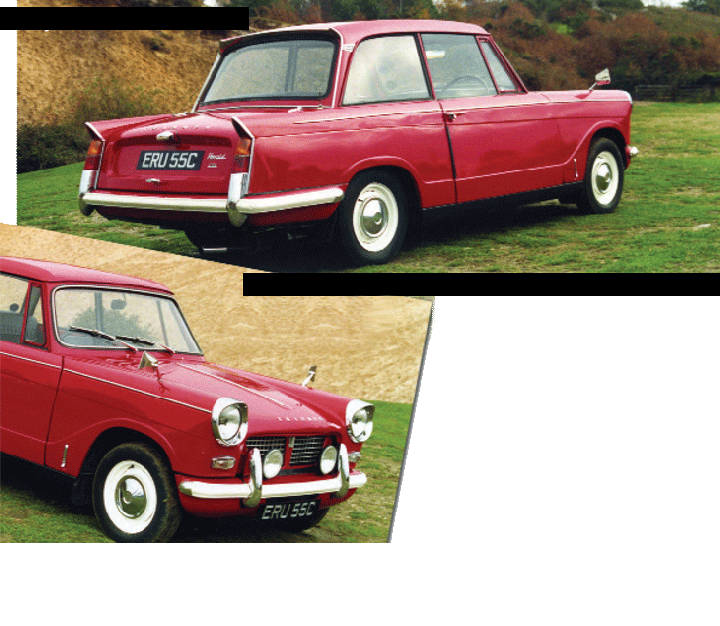
Triumph Herald
Hark... the Herald angels
Kim Henson guides us through the buying process

FACTS AND FIGURES:
Built: 950: 1959-62 • 1200: 1961-70 • 12/50: 1962-67 • 13/60: 1967-71
Bodywork: Two door saloon, coupé, estate, convertible, 'Courier' van
Engine: Overhead valve, in-line four cylinder. • 950: 948cc; Single carburettor, 34.5 bhp;
twin carburettor, 42.4 bhp • 1200: 1147cc, 39 bhp (48 bhp from Nov 1964) • 12/50:
1147cc, 51 bhp • 13/60: 1296cc, 61 bhp
0-60 mph: 950: Single carb, 28 sec; twin
carb, 22 sec; 1200: 24 sec (20 sec from Nov 1964) • 12/50: 19 sec • 13/60: 18 sec
Top speed: 950: Single carburettor, 70+ mph; twin carburettor, 80 mph • 1200: 75 mph
(80+ mph from Nov 1964) • 12/50: 80+
mph • 13/60: 85 mph
Typical fuel consumption: 35-40+ mpg
PRICES*:
Saloons:
Rough, £300. Good, £1,000+. Top Notch,
£1,800+
Convertible:
Rough, £1,000. Good, £2,000. Top Notch,
£3,500+
Coupé:
Rough, £700+. Good, £1,200+. Top Notch, £2,500+
Neglected Heralds are often ailing in terms of the front suspension (due to lack of regular lubrication) and drivetrain woes which can include worn universal joints (listen for clicking sounds).
A very major plus point with all versions is the unrivalled access to the engine, steering gear and front suspension, courtesy of the forward-tipping bonnet/wing assembly, which tilts as a unit; this is a great help during maintenance/repair work.
Prices for most versions are still affordable, although convertibles in particular can command higher figures (as can the Courier vans). The Heralds are inexpensive to run; fuel consumption is typically between 35 and 45 miles per gallon, and spares are widely available at reasonable prices, from a number of specialists.
The club scene is very active. Organisations worth contacting include:
• Club Triumph. Tel. 01425 274193.
www.club.triumph.org.uk
• Triumph Sports Six Club. Tel. 01858 434424.
www.tssc.org.uk
• Triumph Herald Club.com – online community for Herald enthusiasts. www.triumphheraldclub.com
*Values estimated at February 2008.
MAKING its debut in 1959, the Triumph Herald was a new compact, stylishly angular car from the Standard-Triumph concern, and effectively replaced the Standard Eights and Tens of the 1950s.
The newcomer was unusual for a car of its time in featuring a separate chassis frame, but this made easier the provision of a wide range of differing body styles on the same basic platform.

Copyright Motopia © Contact Us